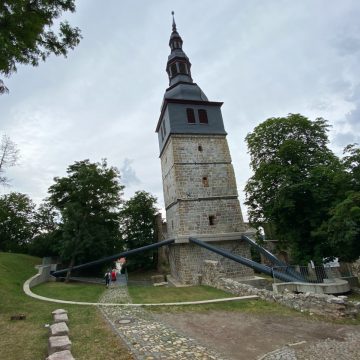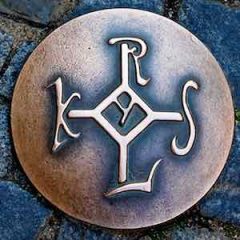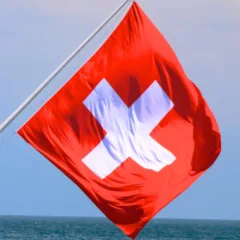Der Schiefe Turm der Oberkiche in Bad Frankenhausen leans at 4.93° more than the Leaning Tower of Pisa and has the largest overhang of any church in Germany.
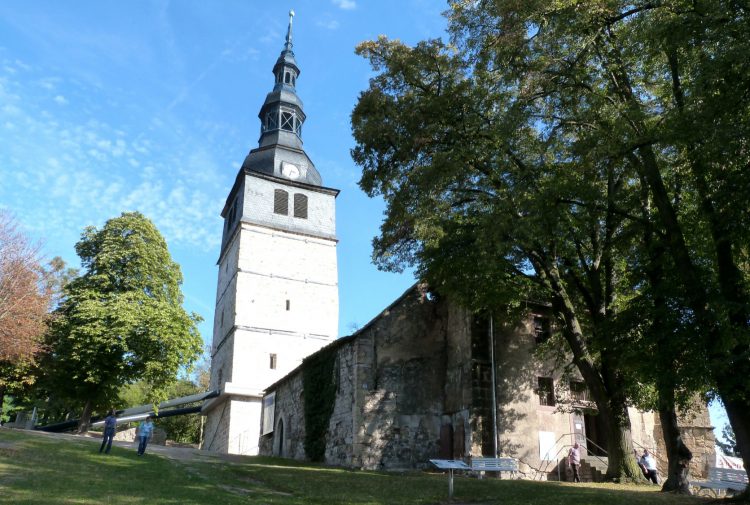
The leaning tower of the Oberkirche in the Thuringian town Bad Frankenhausen in central Germany has with a displacement of 4.6 m the largest overhang of any church tower in Germany. Its slant of 4.93° makes it more crooked than the Leaning Tower of Pisa. The tower has 14th-century Gothic origins but the upper parts are 18th-century baroque. A modern finely engineered system of steel cables, pipes, and reinforced concrete anchors, should keep the tower standing uptight for years to come. It is worth stopping over for a quick look when traveling in this part of Thuringia.
Leaning Church Tower in Bad Frankenhausen
The leaning tower of Bad Frankenhausen (Der schiefe Turm) is the church tower of the Oberkirche (Upper Church), or more fully Unser Lieben Frauen am Berge. The tower has a 14th-century Gothic base but the upper parts are baroque from the 1760s — it is more famous for its lean than for its artistic architecture.
The 56-m high tower leans at 4.93°, which is more than the Leaning Tower of Pisa’s 3.97°. However, this tilt angle places it only second in Germany behind the leaning tower of the church of Suurhusen, which at 5.19° is the world’s most leaning tower that is unintentionally tilted. (The list of leaning towers is surprisingly long.)
As with the famous tower in Italy, advanced modern engineering was required to keep the tower in Bad Frankenstein both leaning and upright.
History of the Oberkirche
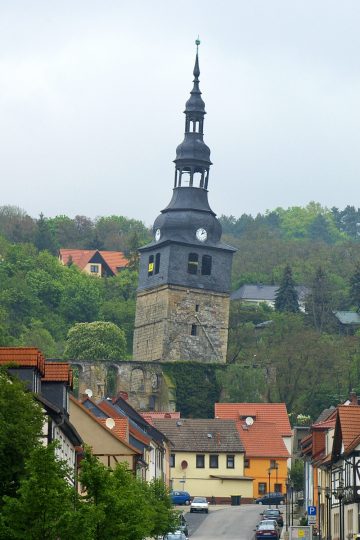
The Oberkirche in Bad Frankenhausen was completed in 1362 as a gothic basilica replacing an earlier Romanesque building. Through the centuries it was repeatedly damaged in wars, eg the Peasants’ War (1524-5), the Thirty Years’ War (1618-48), the Seven Years’ War (1756-63), during the Napoleonic Wars in 1806, and by locals at the end of the Second World War (1945).
The top of the tower collapsed after a town fire in 1759 and was repaired immediately with a new baroque upper structure. The lean was already obvious at the time and special building measures used then to counter the tilt currently make it even more obvious that this tower is not perpendicular to the ground.
While the interior was repeatedly plundered during wars, the structural damage to the church was done mostly by nature. The cause of the lean is the Elisabeth-Quelle (Elizabeth Spring) — a saline source only 160 m to the west of the church that still feeds the popular Solewasser-Vitalpark spa. The water continues to dissolve the underground salt deposits causing sporadic sinkholes and other earth movements in the region.
The church itself was left a ruin after the roof of the nave was removed in 1962 due to damage caused to the rafting by fungi. The East German regime had little use for a church so it was left unrepaired ever since. It is often possible to enter the old portal but there is nothing left inside the former church building.
Saving the Leaning Tower of Bad Frankenhausen
Although the tilt was already noted in 1640, the lean increased rapidly during the 20th century. In 1920 the overhang was 2.21 m, in 1960 it was 3.60 m, in 2001 it was 3,89 m and by 2013 it reached the present 4.60 m. The critical tipping point is considered to be 6.07 m.
Attempts to secure the tower already started in 1911 but only more recent engineering work is likely to make a difference. Reinforcing the foundations and underground in 1999 slowed down the tilt increase from around 6 cm per year since 1970 to a more modest 2 cm per year.
In the past decade, steel inserts secured the tower from the inside but the most import measures are the steel pipes and cables linked to reinforced concrete anchors that were fitted to the bottom of the tower. These are clearly visible and are in many ways the most impressive part of the tower.
The recent rescue effort cost well over €1 million. Although the tower is old, it is no more special or better looking than thousands of similar towers in German towns. The list of other projects envying the funds spent to secure this tower must be long.
Visiting the Leaning Tower of Bad Frankenhausen
The area around the Oberkirche is freely accessible at all times. The small information pavilion is open usually Tuesday to Friday from noon to 18:00 and weekends from 10:00 to 18:00. During those times, it is also possible to have a quick look inside the ruins of the church nave.
The Leaning Tower is at the intersection of Oberkirchgase and Schwedengasse to the northeast of the town center just beyond the Kurpark. It is worth a quick look when in the vicinity — the two more popular tourist destinations near Bad Frankenhausen are the Panorama Museum with its monumental painting of the Peasants’ War and the Kyffhäuser-Denkmal with a statue of Emperor Barbarossa (and Wilhelm I) in the Kyffhäuser mountains.
